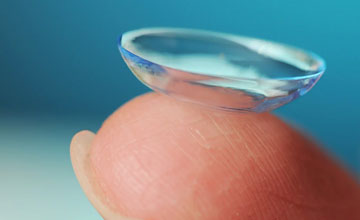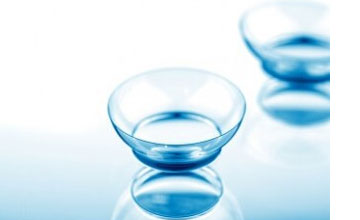Lenses set in a frame that holds them in front of the eyes, used to correct errors of refraction or to protect the eyes. You don’t need to be a fashion expert to find eyeglass frames that look great on you. Optics Centre helps you in finding the right frames that work best for your style. The parts of the spectacles are: the lenses; the bridge between the lenses, resting on the nose; the rims or frames, encircling the lenses; the sides or temples that pass on either side of the head to the Ears.Different rim types are suitable for different occasions and personal senses of style. While rimless frames offer a clean, minimalist look that's perfect for the office, full-rimmed frames are perfect for those looking to make a statement.

Products
Spectacle Lenses

Semi-rimless frames can fall on either side of the spectrum. With so many options, you may feel torn in multiple directions. Don't be afraid to try more than one to make sure the fit and shape are right for you. The frames you wear can say a lot about your personality. You can have a pair of glasses that showcase your fun loving side on the weekends and a pair that emphasizes your get down to business tone during the week. We have Frames & Power Glasses for all age. After sales service is given utmost priority with dedicated team of technicians.
Contact Lenses

Contact lenses are medical devices worn directly on the cornea of the eye. Like eyeglasses, contact lenses help to correct refractive errors and perform this function by adding or subtracting focusing power to the eye's cornea and lens. Contacts provide a safe and effective way to correct vision when used with care and proper supervision. They can offer a good alternative to eyeglasses, depending on your eyes and your lifestyle. Myopia (nearsightedness) Hyperopia (farsightedness) Astigmatism (distorted vision) Presbyopia (need for bifocals) can be corrected by Wearing appropriate contact lenses. The health of your eyes should be your main concern. Choose an optometrist who is knowledgeable and experienced with contact lenses.
It is recommended that all patients have a back-up pair of eyeglasses. Many types of contact lenses are available. The type of contacts you use depends on your particular situation. Your optometrist will be able to help you choose from the types of contact lenses according to your Lifestyle, Eye health and Refractive power. For the safety of your eyes, it is recommended that contacts should be removed at bedtime due to risk of infection and risk of contact lens intolerance. Whether or not contact lenses are a good choice for you depends on: Individual needs and expectations Patience and motivation during the initial adjustment period to contact lens wear. How to Care for Your Lenses Contact lenses must be properly cleaned and disinfected when you remove them to kill germs and prevent infections.


All contact lens cases should be cleaned daily and it is recommended that you replace your case every three months Never reuse your contact lens solution. Dispose of contact lens solution in the lens case after each use and let the case air dry. Do not put your lens in your mouth and then in your eye. Never use homemade cleaning solutions as they have been linked to serious eye infections. Any eye drops, even nonprescription ones, can interact with all types of contact lenses. Use the prescribed brand of solution or check with your optometrist before changing brands. Wear Your Lenses Properly. Wash your hands with soap prior to handling contact lenses or touching your eye. Do not share your lenses with someone else. Do not use fashion lenses (non-prescription color lenses) unless they are fitted by an optometrist. Do not purchase bootleg lenses. Wear lenses on the schedule prescribed by your optometrist.
Remove Your Contact Lenses and Call Your Optometrist When You Notice These Symptoms, Your eye is painful. You are sensitive to light. Your eye is red for more than two days. You have discharge from your eye. You have blurry vision. Your eye feels scratchy. Remember to book eye health exams with your Optometrist for the protection of you eyes.
Sunglasses offer vital protection
Repeated exposure to UV radiation can cause a number of serious (and seriously icky) eye problems, including cataracts, pterygiums (overgrowth of tissue from the white of the eye onto the cornea), solar keratopathy (cloudiness of the cornea), cancer of the conjunctiva, and skin cancer of the eyelids. And it's just as important to protect children's eyes from the sun with sunglasses (as soon as you can convince them to keep them on); UV exposure in childhood is related to skin problems later in life, and it's likely to be much the same for eyes.

Polarized lenses are available in a variety of colors, depending on the material from which the lenses are made. Darker colors provide higher levels of polarization.
Sunlight can be absorbed or reflected in several different directions. Sunlight that is bouncing off horizontal surfaces such as water, land, or the hood of a car is usually reflected back in a similar horizontal direction if a person wear Polaroid sunglasses.
Advantages of wearing Sunglasses
- Reduce Reflection & Eliminate Glare
- Reduce Eye Strain
- Improves Contrast & Visual Clarity
- Allow for true Perception of Colours.
- Improves Visual Comfort.

